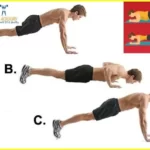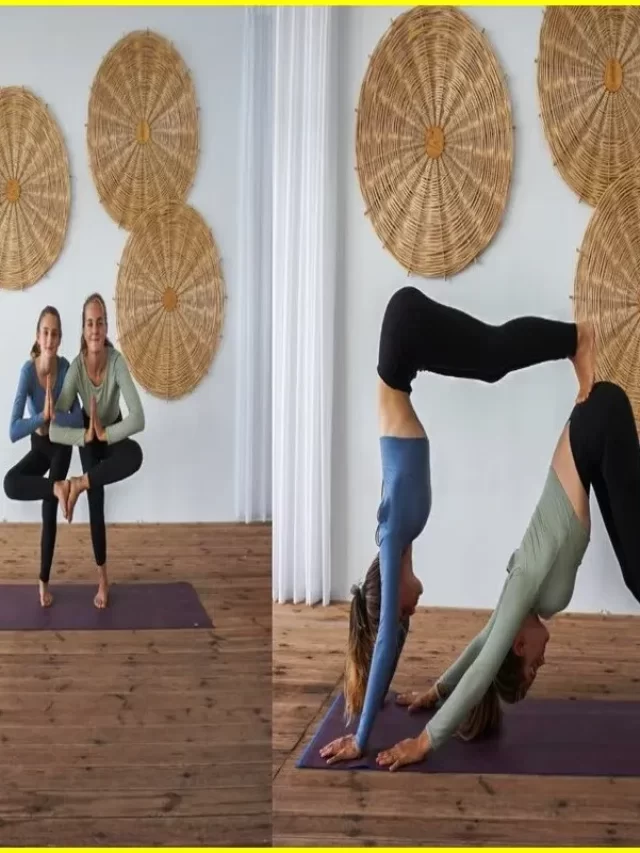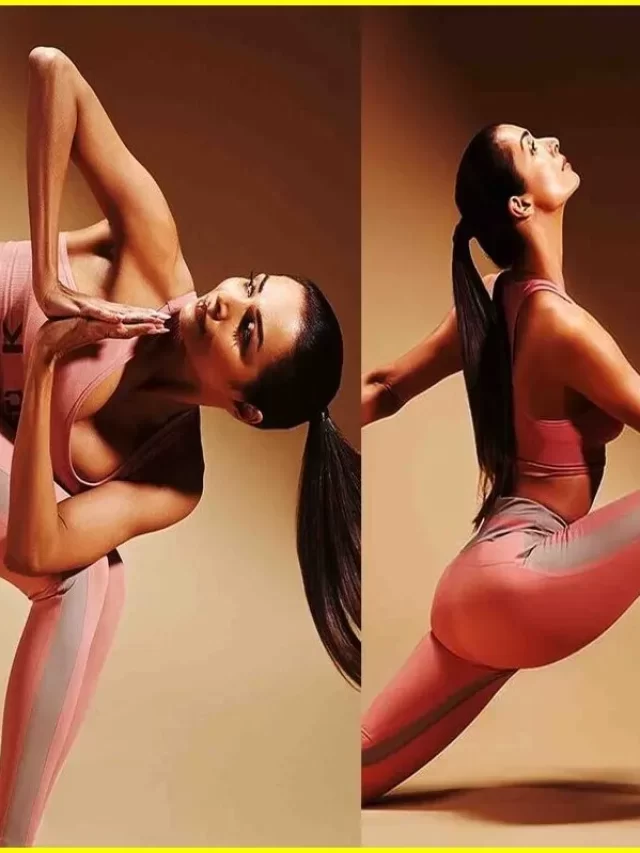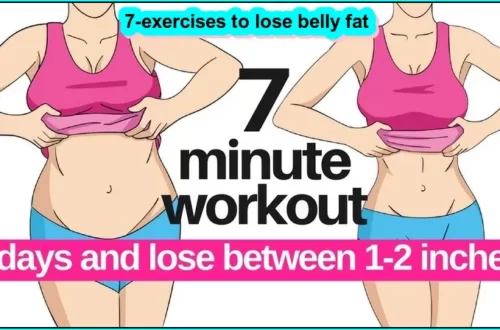How to do a Reverse Plank Best Techniques, Benefits, Variations 2023
How to do a Reverse Plank Techniques
Reverse planks are a great way to strengthen your back, shoulders and legs. It also helps in improving your posture. Plus, it’s a great way to challenge your balance and coordination. To do a reverse plank, start by sitting on the ground with your knees bent and your feet flat on the floor. Then, place your hands on the ground behind you and keep your fingers pointing toward your feet. Next, apply pressure to your hands and feet to lift your hips and torso off the ground. Stay in this position for 30 seconds to 1 minute.
There are several variations of the reverse plank that you can try to mix things up. For example, you could try a one-arm reverse plank or reverse plank leg lift. You can also add weights to make the exercise more challenging. Benefits: The reverse plank is a great exercise for strengthening your back, shoulders and legs. It also helps in improving your posture. Plus, it’s a great way to challenge your balance and coordination.
Article About:- Health & fitness
Article About:- Medical Technology
Article About:- Sports

Reverse Plank
A reverse plank is a great way to strengthen your upper body and core. This is a challenging move that can be modified to suit your fitness level. The following guide provides the technique, benefits and variations of the reverse plank.
Technique:
To do a reverse plank, start by sitting on the ground with your legs extended in front of you and your palms flat on the ground next to your hips. Pressing your palms into the ground, lift your hips off the ground and extend your legs behind you. Keep your body in a straight line from head to heels. Maintain this position for 30-60 seconds before lowering back down to the starting position.
Benefits:
Reverse plank is a great exercise to strengthen the muscles of the shoulders, chest and arms. It also challenges the core muscles to work harder to keep the body stable. This exercise can be progressed further by raising the arms and legs while in the plank position.
Variations:
If you’re new to the exercise or have any injuries or limitations, start with a modified version of the reverse plank. Instead of extending your legs behind you, keep them bent at 90 degrees, keeping your feet flat on the ground. As you get stronger, you can start keeping your legs straight. Another variation is to add leg lifts in the plank position. To do this, simply lift one leg off the ground and hold for 10 seconds and then come back down and repeat with the other.

Reverse Plank Hold
The reverse plank is a challenging but effective exercise that works the entire body, including the arms, shoulders, chest, abs and legs. To do a reverse plank, start by sitting on the ground with your legs extended in front of you and your palms flat on the ground behind you. Then, lift your hips so that your body forms a straight line from your head to heels. Maintain this position as long as you can lower back down to the starting position.
There are many benefits to doing reverse planks, including improved posture and core strength. Additionally, this exercise can help tone the arms, shoulders and legs. Reverse planks are also a great way to challenge yourself and build stamina. If you’re looking for a new exercise to add to your routine, try the reverse plank hold.
Reverse Plank Benefits
Reverse plank is an excellent exercise for building strength in the shoulders, upper back, and core. It can also help improve your balance and posture. Here are some of the key benefits of reverse plank:
- Strengthens the shoulders: Reverse plank targets the muscles in the shoulder girdle, including the deltoids, rotator cuff muscles, and trapezius. This exercise can help to build strong, toned shoulders.
- Upper back strength: In addition to strengthening the shoulders, reverse plank also works the muscles in the upper back. This can help to improve posture and alleviate back pain.
- Core strength: As a variation of the traditional plank, reverse plank challenges your core muscles even further. This exercise can help you develop a strong and stable core.
- Balance and coordination: Reverse plank requires you to maintain your balance while inverted. This can help improve your overall balance and coordination.
- Posture improvement: The inverted position of reverse plank helps to lengthen the spine and correct slouching posture.
Reverse Plank Bridge
The reverse plank bridge is a great way to improve core and back strength. The movement is simple: Start in a high plank position with your feet together and your hands shoulder-width apart, then lower your hips toward the ground. Engage your abs and lower your back straight, then press back to the starting position.
This step can be challenging at first, but there are a few things you can do to make it easier. First try to keep your knees on the ground instead of your hips. This will help you get used to the movement and build strength in your arms and shoulders. Once you’re comfortable with this, try slowly moving your feet together until they touch. This will challenge your balance and force you to engage your core even more.
There are also several variations of the reverse plank bridge that you can try once you’ve mastered the basic move. For example, as you come down into plank position, you can lift one leg off the ground. This adds an extra challenge to the move and works your glutes and hamstrings even more. Alternatively, you can try lifting one arm off the ground while keeping the other arm still. This will work your core stabilization muscles even more.
Whichever variation you choose, the revarse plank bridge is a great way to build strength in your upper body and core. Start with 3 sets of 10 reps and build up from there.
Reverse Plank Pose
Assuming you’re already familiar with regular plank pose, to perform reverse plank pose, simply start in a high plank position with your feet together and your palms slightly wider than shoulder-width on the floor. From here, press your palms down and lift your hips and buttocks into the air so that your body forms a straight line from head to heels. Engage your core and hold this position for 30-60 seconds.
There are many benefits of reverse plank pose. This pose helps strengthen the muscles of the wrists, arms, shoulders and core. It also helps in improving posture and can even help in relieving back pain. Revarse plank is a great pose for beginners as well as experienced yogis.
To make revarse plank pose more challenging, several variations can be made. For example, try elevating one leg off the ground or placing a block under your pelvis for added support. You can also try doing the pose with your hands clenched into fists instead of lying flat on the ground. Whichever variation you choose, make sure your core is engaged and breathe continuously throughout the pose.

-
What are reverse planks good for?

Revers planks work your abdominal muscles, including the rectus abdominis, commonly known as the six-pack muscle. Properly done, the revers plank can help you lose weight and build a stronger core. 2. Revers planks work your posterior chain.
-
Does reverse plank burn fat?

If you’re planning to try planks for weight loss, why not try revarse planks? Revarse planks contract the core muscles and work this area to burn fat. Not only this, revarse plank also helps you achieve a great posture.
-
Is reverse plank good for back?

Like all plank variations, the reverse plank is a great way to strengthen your core. It’s especially good for the muscles in your lower back, your hamstrings, and your glutes, but if you’re braced properly, your abs will feel the pinch too.
-
Which type of plank is better?

A forearm plank will help you target those abs more effectively, but a standard straight-arm plank is better for total-body conditioning. For best overall results, switch it up frequently and add some dynamic plank movements as well.
-
What is the most beneficial plank?

The straight-arm plank engages the triceps and the core, being the most preferred plank drill for those who are willing to strengthen their upper body. Meanwhile, the forearm plank helps you strengthen the transverse abdominis muscle and works better for people who target their abs.
-
What type of plank is easiest?

One step up from knee plank is the straight-arm knee plank. It requires a bit more arm and core strength but is easier to perform than a traditional plank. Lie on your stomach, your arms bent at your sides, hands directly under your shoulders, and palms flat on the floor.
-
Which plank is best for weight loss?

Here’s a lowdown on the five variations of plank exercises to reduce belly fat.
Side plank.
Revarse plank
Plank jack.
Plank with shoulder taps.
Mountain climbing plank. -
Can planks reduce breast size?

Plank exercise reduces breast size – If you want your big size breast to reduce to some extent and get the perfectly sized bust-line, then add a plank to your workout program.










